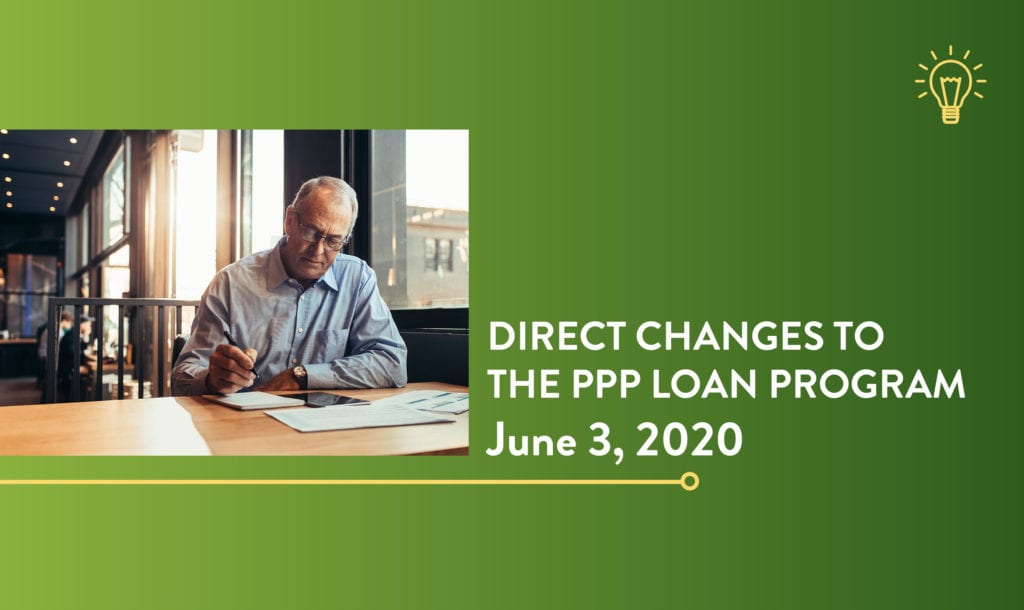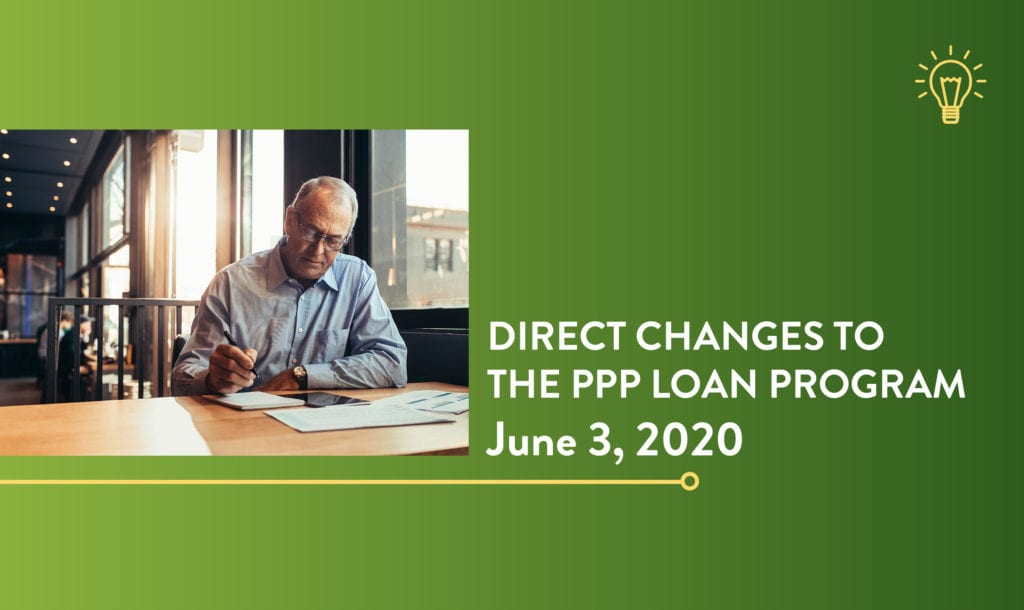
Big changes to the PPP loan program are happening quickly, and Wednesday’s changes bring a lot of new forgiveness deadlines. This information is based on the June 3rd, 2020 updates.
1) 8 week covered period is extended to 24 weeks
Borrowers can choose to extend the eight- week period to 24 weeks, or they can keep the original eight-week period. New PPP borrowers will have a 24-week covered period, and in all cases, the covered period can not extend beyond Dec 31, 2020.
2) The deadline to apply for a PPP loan is June 30th
There are still funds available and the deadline to apply is now set at June 30th. So if anyone was not applying thinking they did not have time to spend the funds they should act quickly and apply before this month ends.
* There are conflicting reports on this loan deadline, the house version had December 31st, and a Senator demanded the program stop lending new funds on June 30th.
3) 75% rule reduced to 60%
Now borrowers must spend at least 60% on payroll, not the 75% in the original bill. However, there is a cliff provision meaning borrowers must spend at least 60% on payroll or none of the loan will be forgiven.
Due to the 24 week covered period, this rule should not be a problem. This along with the other changes should make it easier to achieve 100% forgiveness.
4) Rehire date moved from 6/30/20 to 12/31/20
Businesses now have until 12/31/20 to rehire employees back to the 2/15/20 level.
Due to the 12/31/20 rehire date, most typically won’t be filing forgiveness applications until January 2021 at the earliest.
5) Required FTE goal for the rehire exemption is reduced if you are unable to rehire people or business has declined due to HHS, CDC, or OSHA requirements regarding COVID-19
The legislation includes two new exceptions allowing borrowers to achieve full PPP loan forgiveness even if they don’t fully restore their workforce. Previous guidance already allowed borrowers to exclude from those calculations employees who turned down good faith offers to be rehired at the same hours and wages as before the pandemic. The new bill allows borrowers to adjust because they could not find qualified employees or were unable to restore business operations to Feb. 15, 2020, levels due to COVID-19 related operating restrictions.
We will need guidance to clarify the inability to restore business operations, but overall this is helpful to increase Safe Harbor and obtain full forgiveness.
6) New PPP loans will have a minimum maturity of 5 years
New borrowers now have five years to repay the loan instead of two. Existing PPP loans can be extended up to 5 years if the lender and borrower agree. The interest rate remains at 1%.
7) Allow Payroll Tax Deferral
Allow small businesses to take a PPP loan and also qualify for a separate, recently enacted payroll tax deferral, currently prohibited to prevent “double dipping.”
8) Extend Loan Forgiveness Period
Extend the period for when a business can apply for loan forgiveness, from within six months to within 10 months of the last day of the covered period, before it must start making interest and principal payments. Under the new bill, PPP loan interest and payment of principal and fees will be deferred until the loan is forgiven by the lender.
Here are some Indirect changes to the PPP loan program:
- We assume the $15,385 per person payroll limit will be increased to $46,154 but need confirmation from the SBA.
- The forgiveness application will be completely changed.
- Although utilities, health insurance, SUTA, and other small costs are still eligible, they become less important. Rather than worry about tracking small receipts, we are recommending focusing on the big items that are easy to show to the lender that’ll review the forgiveness application – payroll and rent.
Check out our PPP Webinar resource page for up to date information and information on past and future Webinar presentations.
Copyright 2020









